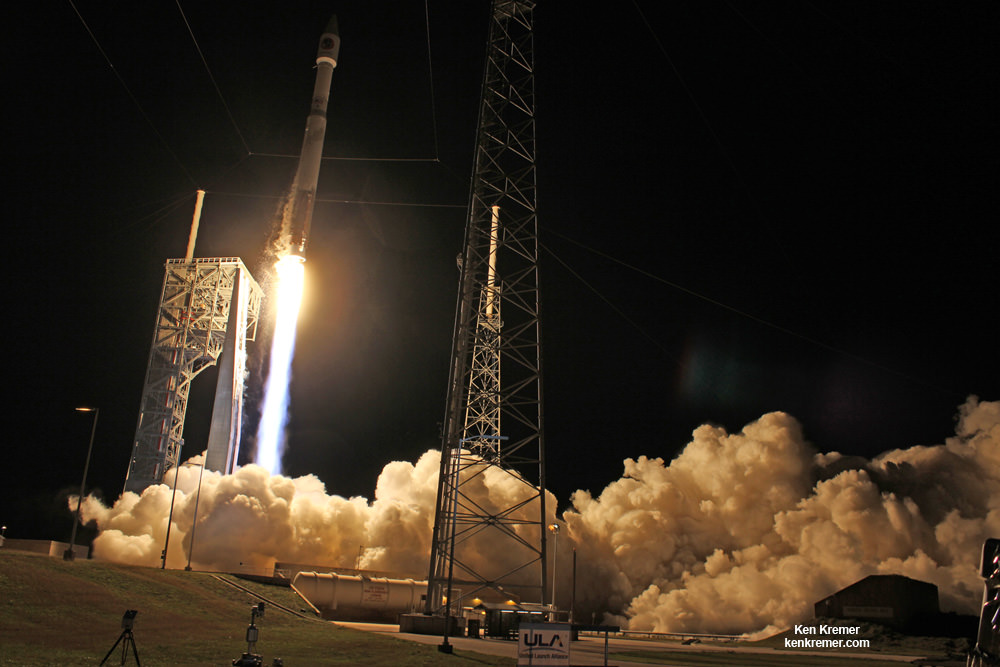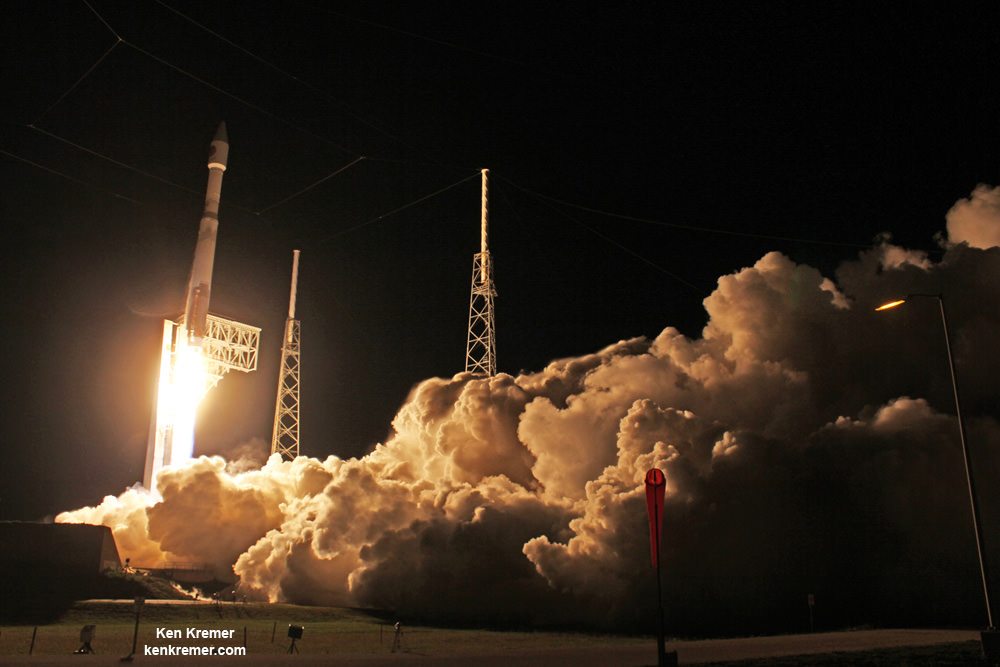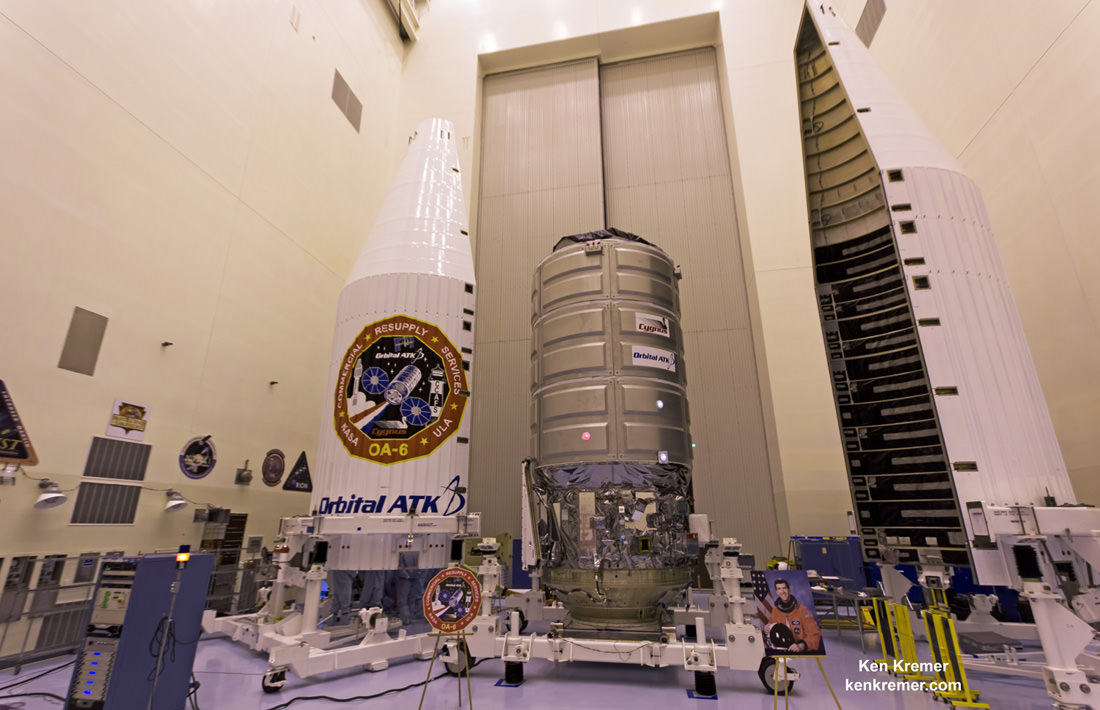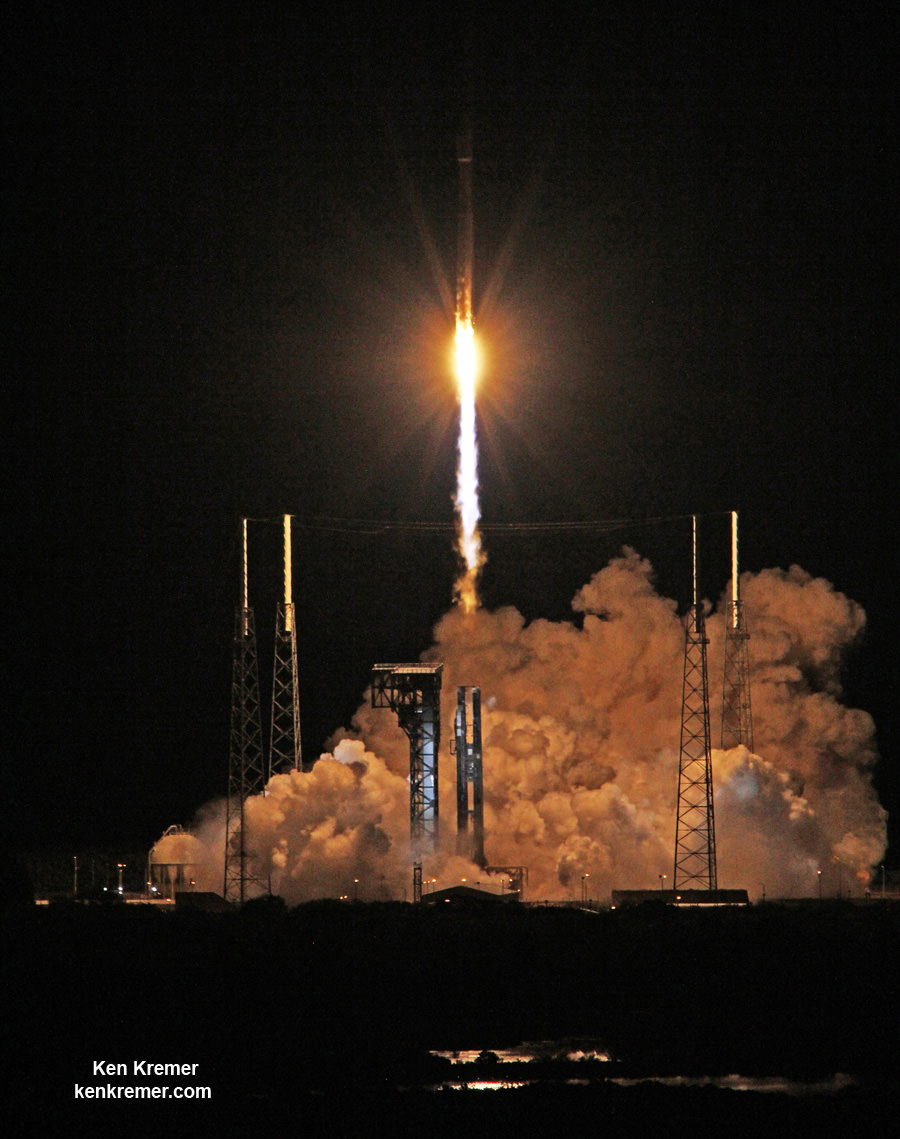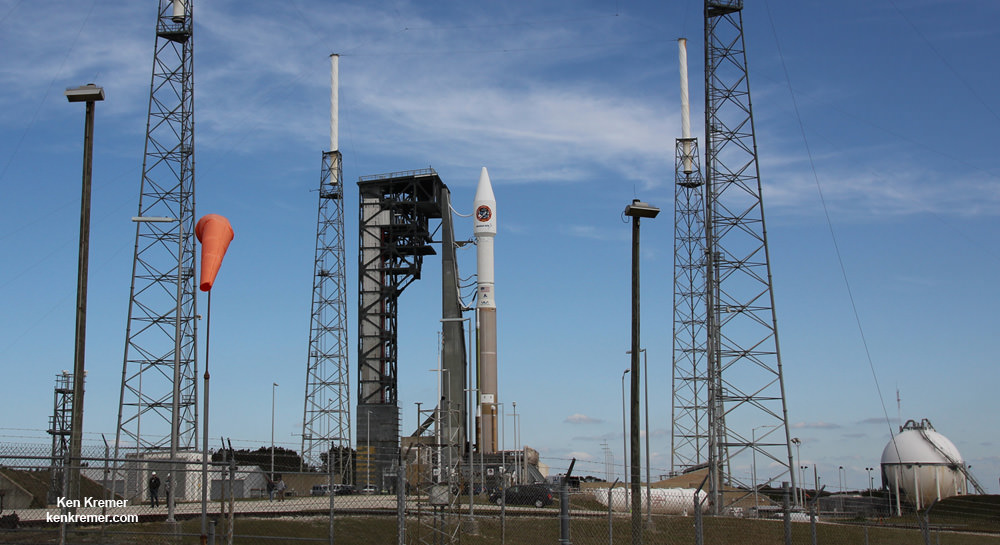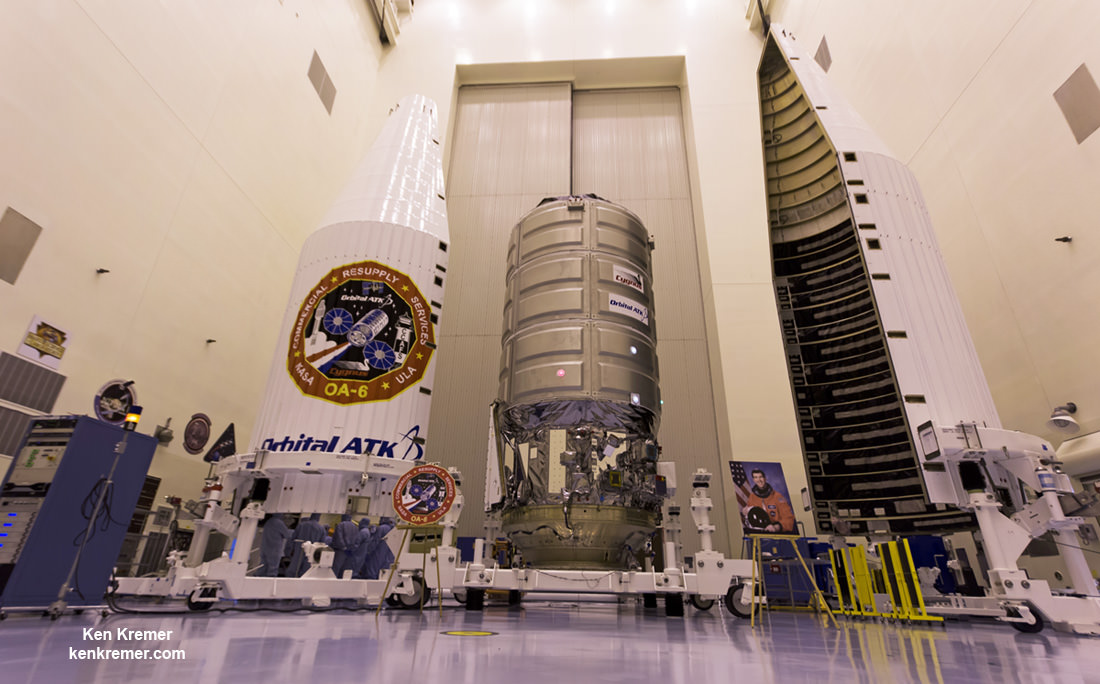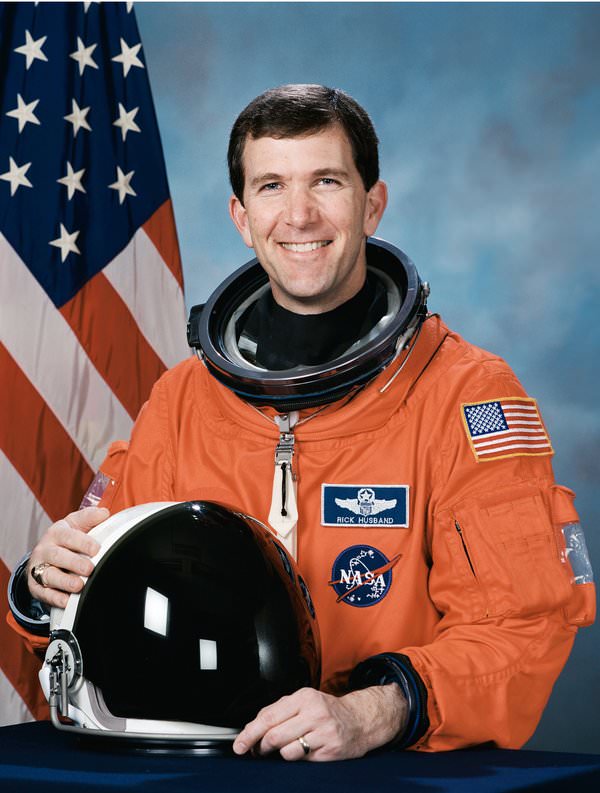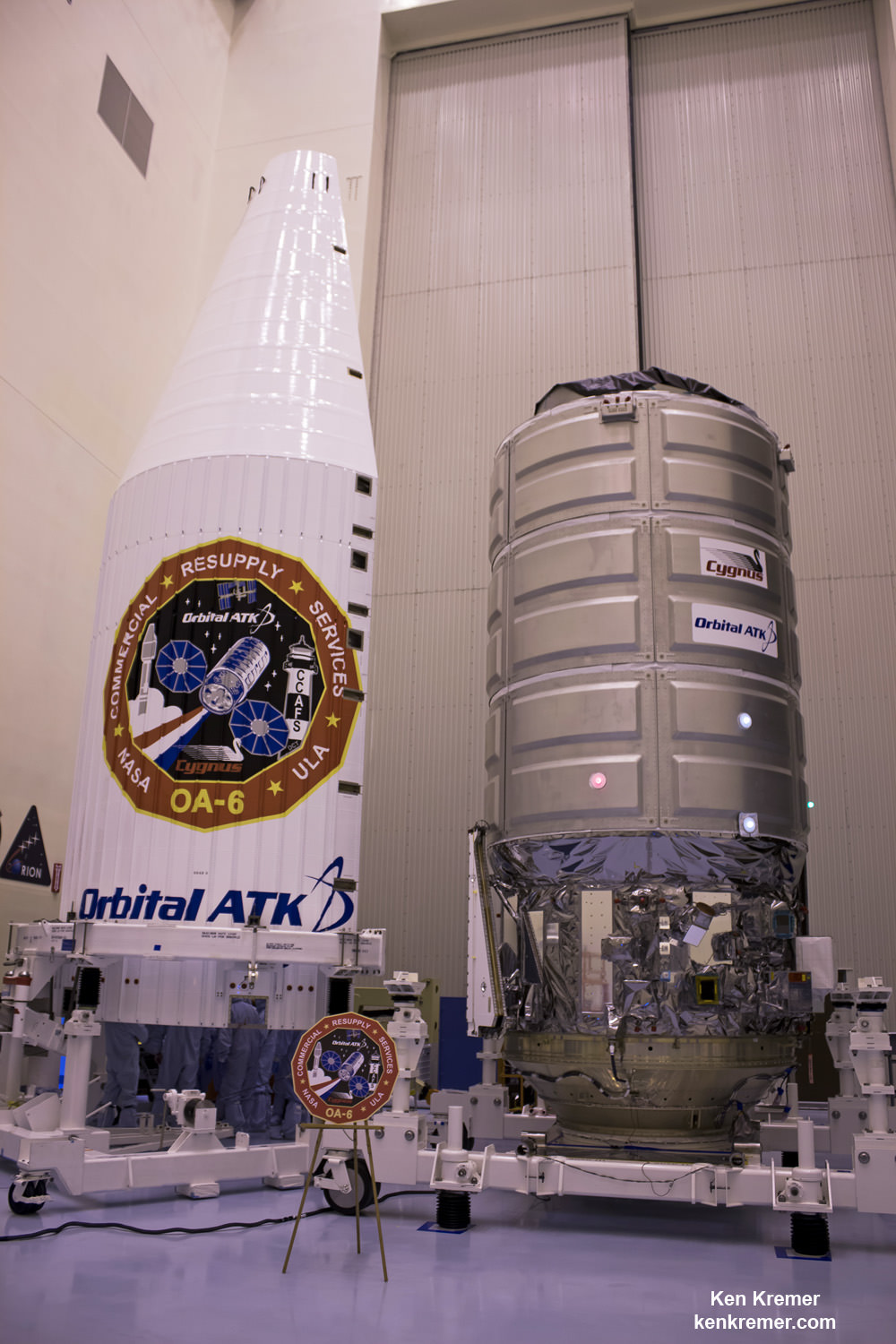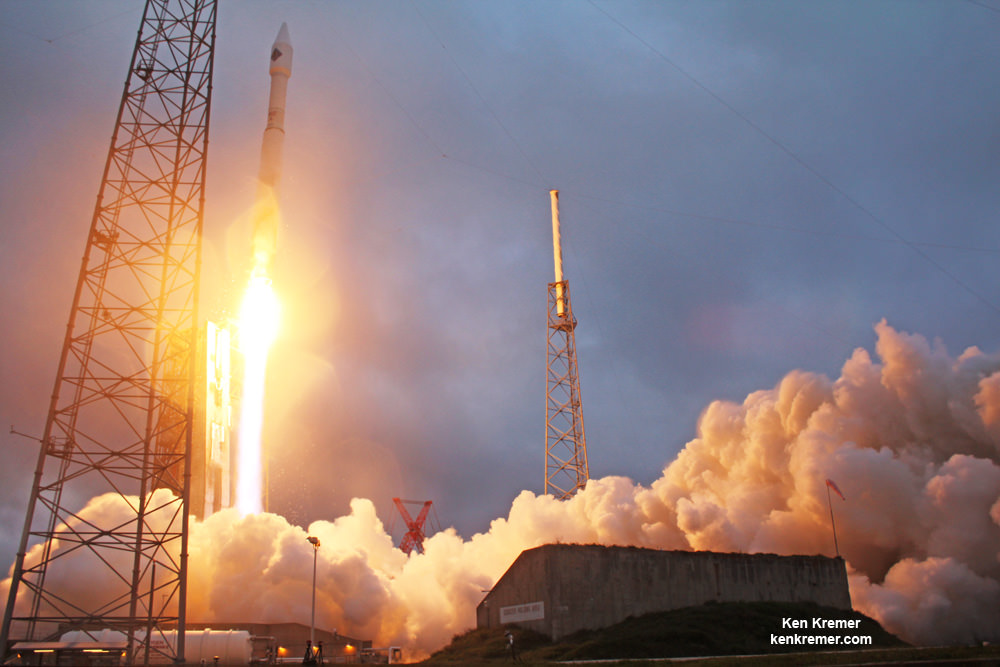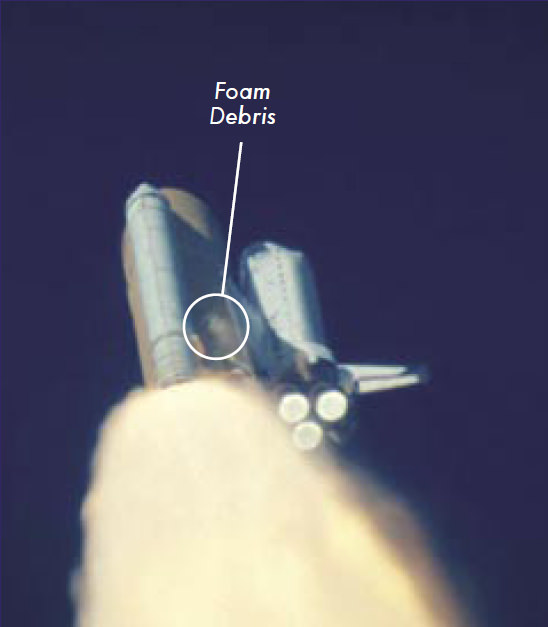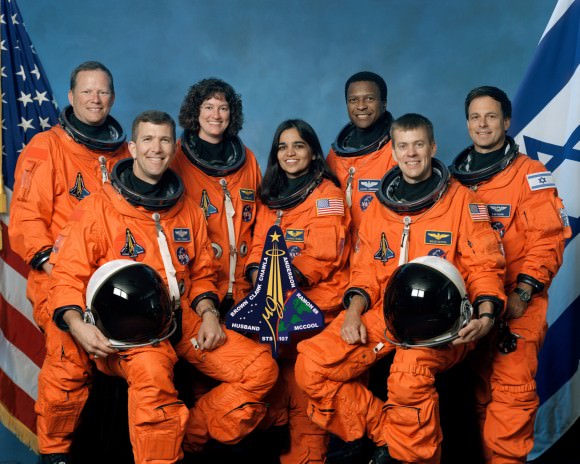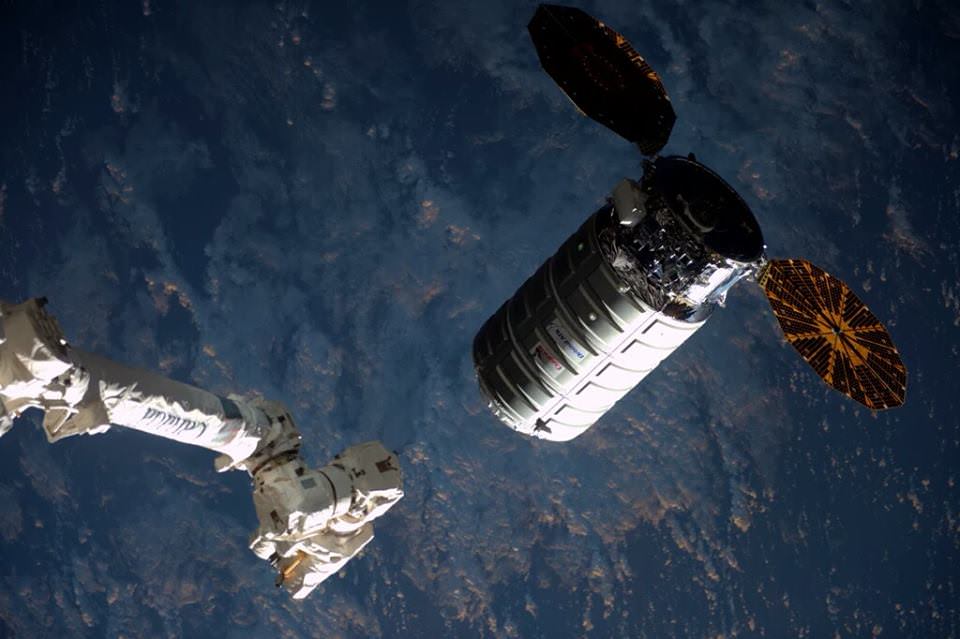
KENNEDY SPACE CENTER, FL – Following a perfectly executed three day orbital rendezvous, NASA astronaut and Expedition 47 Commander Tim Kopra successfully reached out with the International Space Station’s robotic arm, Canadarm2, grabbed hold and captured Orbital ATK’s commercial Cygnus cargo freighter at 6:51 a.m. EDT, this morning, Saturday, March 26, 2016.
The ISS and Cygnus were soaring some 250 miles (400 kilometers) over the Indian Ocean at the time of capture following the cargo crafts blastoff atop a two stage United Launch Alliance (ULA) Atlas V at 11:05 p.m. EDT on Tuesday, March 22, 2016 from Space Launch Complex 41 on Cape Canaveral Air Force Station, Fl.
Robotics officers on the ground in Houston working with the station crew high above then maneuvered Cygnus – holding over 3.5 tons of critical cargo supplies and science – into position for final installation and berthing to the orbiting laboratory’s Earth-facing port on the Unity module a few hours later. It was finally bolted fully into place at approximately 10:52 a.m. EDT.
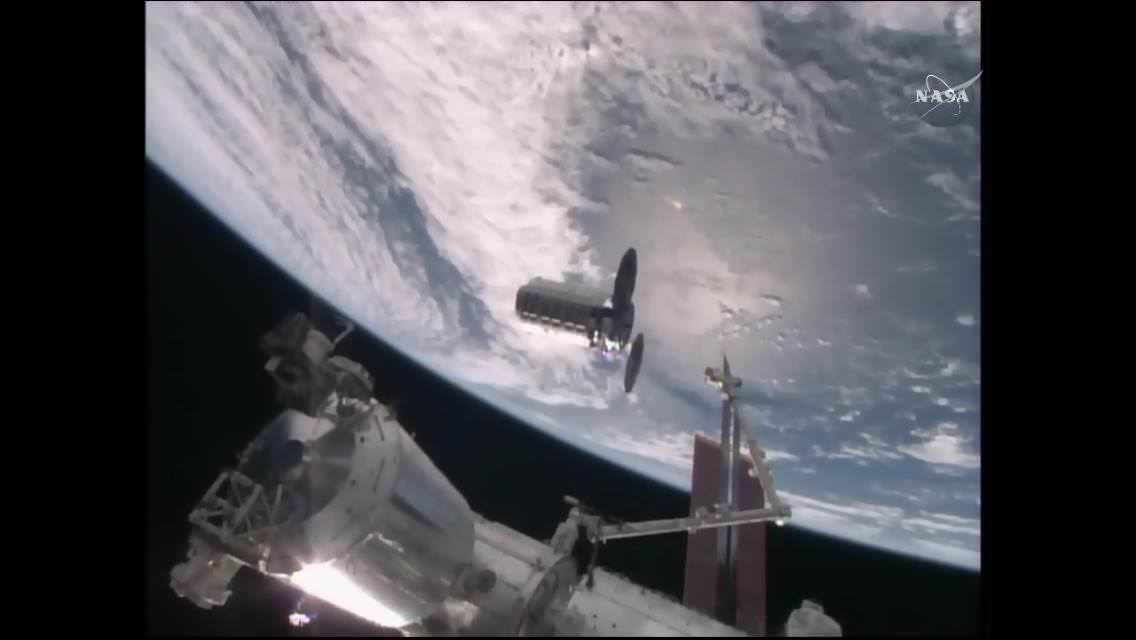
This Cygnus is named the S.S. Rick Husband in honor of Col. Rick Husband, the late commander of Space Shuttle Columbia, which was tragically lost with its crew of seven NASA astronauts during re-entry on its final flight on Feb. 1, 2003.
The crew plans to open the hatch to the SS Rick Husband tomorrow morning on Easter Sunday, March 26.
The Orbital ATK Cygnus CRS-6 space freighter is loaded with 3513 kg (7700 pounds) of science experiments and hardware, crew supplies, spare parts, gear and station hardware for the orbital laboratory in support of over 250 research experiments being conducted on board by the Expedition 47 and 48 crews.

All of Cygnus maneuvers were “executed to perfection for a flawless approach and rendezvous” after the three day trip from Florida to the ISS, as the vehicle closed in to within a few meters for grappling, said NASA commentator Rob Navius.
NASA TV showed spectacular HD views of Cygnus and its UltraFlex solar arrays – deployed 2 hours after launch – from station and robotic arm cameras during the final approach operation, as flight controllers closely monitored all spacecraft systems.
“The crew is ready for Cygnus approach to the capture point,” radioed Kopra.
“Station you are go for capture,” Mission Control radioed back.
Cygnus was placed into free drift mode before capture to prevent any accidental perturbations in the final seconds.
From his robotics work station in the Cupola, Kopra then put the arm in motion by about 6:40 a.m. EDT, during the final phase of the final approach. He extended the 57 foot long (19 meter long) arm to reach out and grab the aft end of Cygnus cargo craft at its grappling pin by closing the snares on the end effector.
ESA astronaut Tim Peake served as backup for arm operations while NASA astronaut Jeff Williams monitored Cygnus systems.
The SS Rick Husband was rock steady during its capture as the station was flying over South Africa and the Indian Ocean.
“Capture confirmed,” reported Navius just moments before the video downlink was temporarily lost as the station communications moved between satellites.
“Excellent work gentleman. Much appreciated. Made that look easy,” radioed Jeremy Hansen, a Canadian Space Agency astronaut from Houston mission control.
“We’d also like to say we are really honored to bring aboard the SS Rick Husband to the International Space Station,” radioed Kopra. “He was a personal hero to many of us. This will be the first Cygnus honoree who was directly involved with the construction of this great station.”

It took about 9 minutes to complete the approach from the 30 meter distant hold point to the final capture point where the SS Rick Husband Cygnus arrived at about 6:37 am EDT. NASA TV showed the grapple fixture gradually coming into view.
Cygnus approached precisely within the center of the approach corridor, said Peake, during continuing updates as the ship moved closer to the targeted berthing port. It was perfectly aligned for its capture point.
Cygnus grapple fixture is located at the bottom end of the vehicles service module, beside the thruster.
Kopra and Peake are spending their 103rd day on the station today. While Williams arrived just 8 days ago.
All burns to get to the initial rendezvous point in the keep out sphere 250 meters away were “right on the money. Every burn has been on course and on target, said NASA JSC commentator Navius in Houston, as Cygnus soared some 400 km over the Pacific.
“Everything has gone off without a hitch. A rock solid approach.”
Flight controllers in Houston and Orbital ATK’s Dulles control headquarters then gave the go ahead to resume moving and approach closer to the 30 meter hold point.
The actual berthing operation took place about an hour later than expected to double check that everything was precisely aligned and communications were fully established.
Controllers used the arm to move Cygnus in for capture. They commanded four gangs of four bolts to latch Cygnus to the common berthing mechanism (CBM) on the internally positioned Unity modules nadir or Earth-facing port.
The first and second stage captures were successfully completed by 10:52 a.m. EDT this morning, marking the official hard mating of Cygnus and the station.
When the ISS Expedition 47 crew members open the hatch, they will be greeted with a sign noting the spacecraft was named SS Rick Husband in honor of the STS-107 mission commander.

The SS Rick Husband Cygnus is actually at the vanguard of a “constellation” of three resupply ships arriving at the station over a three week period of three weekends.
Next comes the Russian Progress 63 which will dock at Russia’s Zvezda module next weekend after launching this Thursday from site 31 at Kaszakhstan carrying another three tons of supplies.
Following Progress is the SpaceX Return To Flight (RTF) mission dubbed SpaceX CRS-8.
It is slated to launch on April 8 and arrive at the ISS on April 10 for berthing to the Earth-facing port of the Harmony module – at the end of the station where NASA space shuttles formerly docked. It carries another 3.5 tons of supplies.
So altogether the trio of international cargo ships will supply over 12 tons of station supplies in rapid succession over the next 3 weeks.
This choreography will set up America’s Cygnus and Dragon resupply craft to simultaneously be present and reside attached at adjacent ports on the ISS for the first time in history.

Plans currently call for Cygnus to stay at station for approximately two months until May 20th, when it will be unbolted and unberthed for eventual deorbiting and reentry.
But first it will stay on orbit for about another eight days, said Orbital ATK’s Cygnus program manager Frank DeMauro in an interview with Universe Today.
After unberthing, Cygnus will be used to conduct several experiments including the Saffire-1 experiment, it will deploy nanosats from an externally mounted carrier, and the REBR experiment will monitor the burn-up of Cygnus during the fiery reentry into the Earth’s atmosphere, said DeMauro.
Orbital ATK’s attention then shifts to the next Cygnus launch on the Return to Flight, or RTF, mission of the firms Antares rocket from NASA Wallops on the eastern shore of Virginia.
OA-6 is only the second Cygnus to be launched atop a ULA Atlas V rocket, following the OA-4 mission last December.
The CRS-6/OA-6 flight is also the second flight of the enhanced Cygnus variant, that is over 1 meter longer and sports 50% more volume capability.
Thus it is capable of carrying a much heavier payload of some 3500 kg (7700 lbs) vs. a maximum of 2300 kg (5070 lbs) for the standard version.
Watch for Ken’s onsite launch reports direct from the Kennedy Space Center in Florida and continuing mission reports.
Stay tuned here for Ken’s continuing Earth and planetary science and human spaceflight news.
Video caption: Mobius video camera placed at Florida launch pad captures blastoff up close of Orbital ATK OA-6 (CRS-6) mission riding to orbit atop a United Launch Alliance Atlas V rocket on March 22, 2016 at 11:05 p.m. EDT from Space Launch Complex-41 on Cape Canaveral Air Force Station. Credit: Ken Kremer/kenkremer.com

